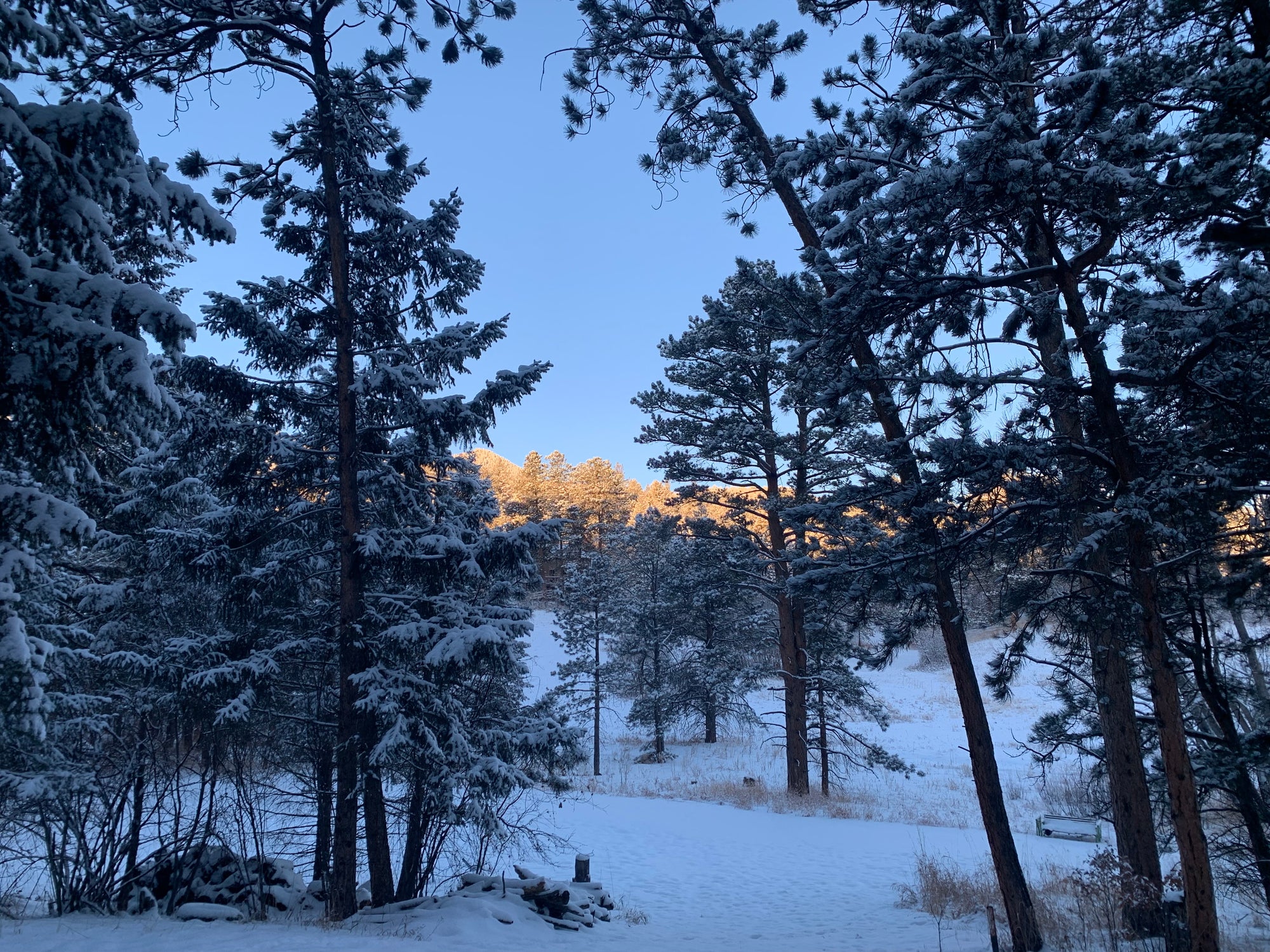
How do trees survive the winter?
How do trees survive the winter?
Have you ever found yourself walking outside on a cold winter's day? Maybe you’re just stepping out to walk the dog in your jammies, or on a hike with some friends. As you walk along the heat of the home disappears and you're left only with the warmth of your body and the clothes on your back insulating that heat. Eventually you think to yourself “Gosh, i am so dang cold right now and i've got this jacket on, these pants, these gloves, this nice warm hat on my head, how the heck do all these bare trees tolerate this perpetual cold all winter long?”

For the holidays this year we drove out west to Colorado. A few days after we arrived a snowstorm came rolling into the mountains. As a Northeasterner, snow out west just hits differently - I don’t know what it is. I guess it must be the lack of moisture, or the altitude or maybe it has something to do with all the people wearing cowboy hats in the grocery stores? Out there, everyone knows it's coming. Snow is an event, an acknowledgment of natural forces. Preparations are made to stay safe, warm and comfortable. People head to the store for supplies, firewood is stacked neatly by the door, and the snow blower is gassed up ready to go. We do what we can to weather the storm and most times all is well and we can sit in the comfort of our warm home and watch the beauty of mother nature do her thing.

After the storm, we took our dog Lu for a hike to enjoy the pristine white snow that had just fallen. As we tromped through the knee deep snow, I started to recognize all of the trees towering around me. How their massive trunks sway in the wind, knocking a tuft of snow from high in the canopy as it sprinkle down around us catching the sunlight looking like glitter. I stopped there in my tracks to listen, to hear the quiet that the snow brings. A creaking limb. A chirping bird in the distance. As I was being swallowed up by the beauty around me, I quickly realized the other thing that was starting to swallow me up. The cold, creeping in between my glove and my jacket sleeve, I could feel it everywhere. Despite it being high noon, it was clear that surviving these temperatures calls for some serious equipment.

So how can a living tree survive an entire winter season full of short days, long cold nights and still have the ability to spring back to life once the snow melts? To answer this question we have to travel back to the previous summer. Here in the northern hemisphere between March and June the days are getting longer. Spring into summer is the growing season for trees and like most plants, trees need sunlight to survive. The tree's leaves are able to capture energy from the sun through a green pigment called Chlorophyll. The sun's energy is used to convert carbon dioxide and water into chemical compounds like sugars. The sugars produced by the tree are what it uses as energy to survive. As a byproduct of this chemical change, water is spent and oxygen is released into the air. The sugars produced can be stored or transported throughout the tree as needed, these sugars are commonly known as sap. Most of a tree's energy is used up by the process just described, called photosynthesis.
As summer fades and the days become shorter the tree recognizes that there is not enough daylight to produce the energy it needs. Essentially the energy spent to photosynthesis is greater than the solar energy the tree is able to capture in a day. It is at this pivotal time that the tree begins its seasonal transition into the dormant season: hibernation.
Shorter days bring colder temperatures and after an entire growing season of photosynthesis, the tree is flush with nutrients and lots of water. About 50% of a tree's mass is water, in fact a tree can take on between 10 to 150 gallons of water daily! Anyone who has left a LeCroix in the freezer knows what happens to water when it freezes, it expands. If the water has nowhere to go it can actually explode. That's right, trees have been known to explode! If a sudden cold spell happens before the tree has fully transitioned into its hibernation phase, the water molecules can rupture the cell walls.

With more than 50% of its mass being water, it is very important that the tree ditch that water before the freezing temperatures of winter come along. The tree can do this a few different ways. As the days get shorter and photosynthesis stops, the tree begins to send sap down into the roots where moisture can be released into the ground. Another way trees can release water is through the pores in their leaves. The large fleshy leaves of deciduous trees are very effective at releasing water into the air. As more and more moisture is released the chlorophyll in the leaves break down and the leaves dry out and fall. Simultaneously a small bud emerges from where the leaf once was. Shedding its leaves is a great way to get rid of water as well as protect the branches from the weight of snow and freezing rain that could damage the branches.
By now the tree has lost all of its leaves and is getting closer to fully shutting down for the winter. However, the tree still holds a lot of water that could damage living tissue in cold temperatures. When we talk about trees sending sap to different parts of the tree, whether it is to the roots for hibernation or to heal a damaged wound, the tree only uses the outermost layer to do this type of work. This is called the Cambium layer which is just below the bark, it contains the only actual living matter of the tree. The bark is like a coat of armor that protects the living cells below. Beyond the cambium layer is the heartwood which is the result of seasonal growth that the cambium layer has produced and subsequently died. As the tree grows it expands outwards and the previous years growth is left as an armature to grow on top of. In addition to being able to send energy throughout the tree, the cambium layer can also send water deep inside the tree into the heart wood. The water inside the heartwood can freeze and thaw without damaging the tree because it does not contain any living cells.

The most impressive (in my opinion) way that trees can survive winter actually happens on a cellular level. All living things are made up of trillions of cells, they are the building block of life. The cells inside a tree can actually change their structure in order to survive winter. They do this by passing water outside of the cell wall. If you were to look at this under a microscope you would see all of the cells and in the spaces between all of the cells is where the water is. Because the water is outside the cell walls, it can freeze without damaging the living material inside the cell. Once the snow melts, temperatures rise and the days get longer, the cell can rehydrate itself with water in time for spring.


Next time your walking in the woods or pass by your favorite tree, stop and admire it. Trees have changed and adapted to their environments over many years to be able to persist and survive even in the harshest climates.


